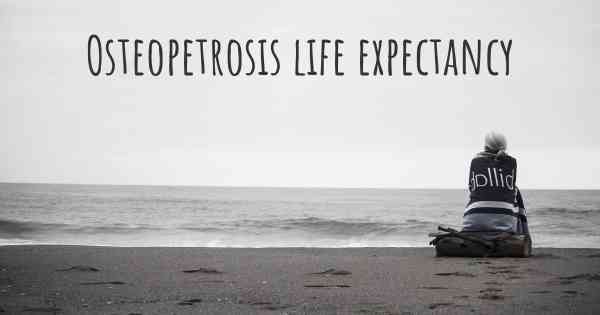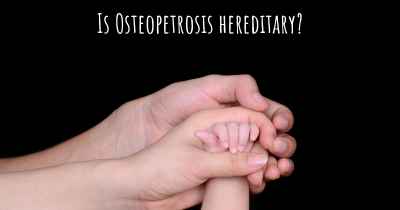What is the life expectancy of someone with Osteopetrosis?
Life expectancy of people with Osteopetrosis and recent progresses and researches in Osteopetrosis

Osteopetrosis is a rare genetic disorder characterized by increased bone density, resulting in brittle bones and other complications. The life expectancy of individuals with Osteopetrosis can vary depending on the severity and type of the condition. In the most severe infantile form, without treatment, life expectancy is significantly reduced due to complications such as bone marrow failure and infections. However, with advancements in medical care, including bone marrow transplantation and supportive therapies, life expectancy has improved for many individuals with Osteopetrosis. It is crucial for patients to receive appropriate medical management and ongoing care to optimize their quality of life and longevity.
Osteopetrosis, also known as marble bone disease, is a rare genetic disorder characterized by the abnormal thickening and hardening of bones. This condition affects the normal functioning of bone cells, leading to an imbalance between bone formation and resorption. As a result, the bones become excessively dense and brittle, making them prone to fractures and other complications.
The life expectancy of individuals with osteopetrosis can vary significantly depending on the type and severity of the disease. There are three main forms of osteopetrosis: infantile malignant, intermediate, and adult benign. Each form has its own unique characteristics and prognosis.
1. Infantile Malignant Osteopetrosis
Infantile malignant osteopetrosis is the most severe and life-threatening form of the disease. It typically manifests within the first few months of life and progresses rapidly. Infants with this form of osteopetrosis often experience severe bone marrow failure, resulting in a compromised immune system and an increased susceptibility to infections.
Without appropriate treatment, such as hematopoietic stem cell transplantation (HSCT), the prognosis for infants with malignant osteopetrosis is extremely poor. The majority of affected infants do not survive beyond early childhood. However, with early diagnosis and timely intervention, the survival rate has improved significantly in recent years. HSCT can provide a chance for long-term survival and improved quality of life for these infants.
2. Intermediate Osteopetrosis
Intermediate osteopetrosis is a less severe form of the disease that typically presents in early childhood or adolescence. Individuals with this form may experience a range of symptoms, including bone fractures, anemia, vision and hearing impairments, and dental abnormalities.
The life expectancy of individuals with intermediate osteopetrosis can vary widely. Some individuals may have a relatively normal lifespan, while others may experience complications that can impact their overall health and longevity. Regular medical monitoring, appropriate management of symptoms, and supportive care can help improve the prognosis and quality of life for individuals with intermediate osteopetrosis.
3. Adult Benign Osteopetrosis
Adult benign osteopetrosis is the mildest form of the disease and often goes undiagnosed until later in life. It is typically characterized by minimal or no symptoms, with bone abnormalities being discovered incidentally through imaging studies.
Individuals with adult benign osteopetrosis generally have a normal life expectancy and can lead relatively healthy lives. However, some may experience complications such as osteoarthritis, fractures, or bone infections, which can impact their overall well-being.
Conclusion
In summary, the life expectancy of individuals with osteopetrosis varies depending on the type and severity of the disease. Infantile malignant osteopetrosis is the most severe form and can be life-threatening without appropriate treatment. Intermediate osteopetrosis has a wide range of outcomes, while adult benign osteopetrosis generally has a normal life expectancy. Early diagnosis, appropriate medical management, and supportive care are crucial in improving the prognosis and quality of life for individuals with osteopetrosis.
Posted May 17, 2017 by María Ximena 1071
Posted Jul 26, 2017 by Chuck 2001
Posted Sep 28, 2017 by Mary 2550
Posted Sep 15, 2017 by Paula 2500








